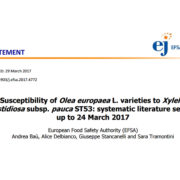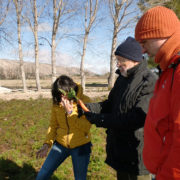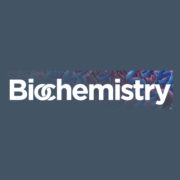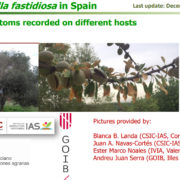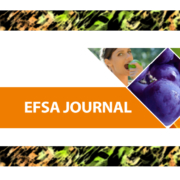Options for developing an integrated framework to assess the impacts of exotic plant pests in Europe
Authors: Espaldon, M.L., van der Werf, W., Mourits, M.C.M., Oude Lansink, A.G.J.M.
Type of contribution: Conference Abstract | Oral Presentation
Conference: 10th Meeting of the International Pest Risk Research Group, 23-26 August 2016, Parma (Italy)
Keywords: Xylella fastidiosa, Candidatus Liberibacter Solanacearum, Emerging Diseases of Forests
Corresponding author: Maria Laya Ortega Espaldon, WU
Abstract
Various integrated impact assessment (IIA) frameworks are used by governments and intragovernmental agencies to aid in planning and decision making for the management of natural disasters, such as floods or earthquakes, and planned interventions, such as mining operations or housing development. IIA considers economic, environmental and social impacts.
IIA takes a hierarchical approach in which the impacts are decomposed in a stepwise manner down to a point at which they are concrete enough to make an assessment using data, expert judgement or models. The completed partial assessment results are combined using decision rules to achieve overarching assessments. IIA has similar objectives as pest risk analyses made by plant health authorities; however, the principles and approaches of IIA have not been widely applied in plant health. An inherent difficulty in the integrated approach is the assessment of non-monetary societal impacts.
The classical approach to pest risk analysis follows the steps of entry, establishment, spread and impact, representing the mechanistic pathway towards harm. This approach may not necessarily provide the most effective way to assess the different kinds of impacts that need consideration, such as impacts on plant health, ecosystem functioning, and communities that depend for their livelihoods on agricultural plant production or ecosystem services. The question is what PRA can learn from the practice of IIA.
As part of the Horizon 2020 POnTE Project, we will explore options to use IIA to support plant health authorities developing measures for prevention and control that deliver maximum total benefit to society. Applications will focus on Xylella fastidiosa, Candidatus Liberibacter solanacearum, Phytophthora spp. and Hymenoscyphus fraxineus.


